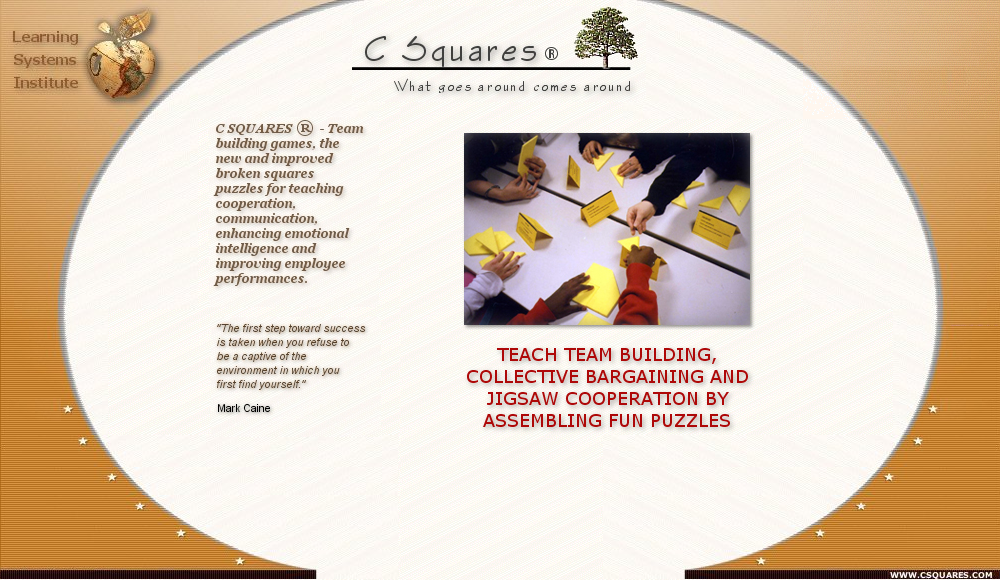"Teacher Talk" Metaphor
Reflects Style of Leadership
"My classroom is a zoo!"
"I try to weave all of the concepts together."
"Those kids are really blossoming."
"He's one of my top students."
"We're always falling behind."
“Metaphors may create realities for us, especially social realities. A metaphor may thus be a guide for future action. Such actions will, of course, fit the metaphor. This will, in turn, reinforce the power of the metaphor to make experience coherent. In this sense, metaphors can be self-fulfilling prophecies.”
Unfortunately, time is not a resource that teachers own. The traditional content of a given course or school year allots specific amounts of time to accomplish certain tasks. Teachers must budget this scarce resource, spending only within the limits of what is allotted. Wasting time on material that isn't part of the assigned curriculum means that they will run out before they have “covered” all the material. Heaven forbid that time runs out before the test and the class hasn't “covered” everything! "Time is a resource" is so accepted in Western thinking that most people are unaware that it is a metaphor, one that is not shared by some other cultures.
“It is what teachers think, what teachers believe, and what teachers do at the level of the classroom that ultimately shapes the kind of learning that young people get."
Andy Hargreaves and Michael Fullan
Carl Jung once said, “Children are educated by what the grown-up is and not by his talk.” If teachers don’t know who they are — if they are unaware of their beliefs, values, and metaphors about learning, teaching, and the nature of knowledge itself — then they are also unaware of what they are teaching by reason of those unconscious processes. In The Predictable Failure of Educational Reform, Seymour Sarason suggests that internal, unconscious values and beliefs about teaching and learning are at the heart of the failure of reform efforts.
“The problem is not technical. Nor is it motivational. Nor is it moral. The problem inheres in your unreflective acceptance of assumptions and axioms that seem so obviously right, natural, and proper that to question them is to question your reality. Therefore, faced with failure after failure, having tried this, that, and almost everything else, you don’t examine your bedrock assumptions. Instead, you come up with variations on past themes — now with more desperation and anger, but less hope.”
Lakoff and Johnson
Think About This:
Classroom Learning is Like Completing a Jigsaw Puzzle
You need some pieces in place
before you can realize
what others may be missing
Fortunately, we are born with some important starting pieces. Most of us are fortunate to develop a rich supply of additional pieces (concepts, skills, perceptions, etc.) during our early years. This leaves us with many uncompleted puzzles, and our particular interests motivate us to choose which puzzle or part of a puzzle to continue completing.
If the completion we want is simple, such as finding the date when a war ended, then the problem is easily solved. But if our curiosity has a bigger goal, such as learning to speak Chinese, learning to grow vegetables, learning to program a computer, or understanding the history of education and its relationship to cultural change, then we have to look for a lot more pieces.
It might seem logical to proceed in a step-by-step process that focused on one piece at a time and made sure we had thoroughly mastered that step before going on to the next. Later in the learning process we may need to do some of this, but at the beginning this "logical" approach doesn't work nearly as well as an immersion approach. (Robert Gilman on The Learning Process, 1984)
Jigsaw Classroom Management is a specific cooperative learning technique with a three-decade track record of success. Just as in a jigsaw puzzle, each piece -- each student's part -- is essential for the completion and full understanding of the final product. If each student's part is essential, then each student is essential; and that is precisely what makes this strategy so effective.
What’s the benefit of a jigsaw classroom? First and foremost, it is a remarkably efficient way to learn the material. But even more important, the jigsaw process encourages listening, engagement, and empathy by giving each member of the group an essential part to play in the academic activity. Group members must work together as a team to accomplish a common goal; each person depends on all the others. No student can succeed completely unless everyone works well together as a team. This "cooperation by design" facilitates interaction among all students in the class, leading them to value each other as contributors to their common task. (Elliot Aronson, copyright 2000)
C Squares ® convey the jigsaw metaphor to team members in any setting. Each learner begins from a different starting point. Some have more to learn, others more to offer. Gradually, collaboration, risk-taking and discovery all arrive at a place of transparency and trust. Each need is filled and the mission accomplished. C Squares ® demonstrate how through integration of body, mind and spirit, a human being achieves wholeness and success. The classroom as jigsaw metaphor becomes a laboratory leaving participants with a mind map of living through lifelong learning. C Squares ® imparts a different kind of management style. Let each one teach one.

